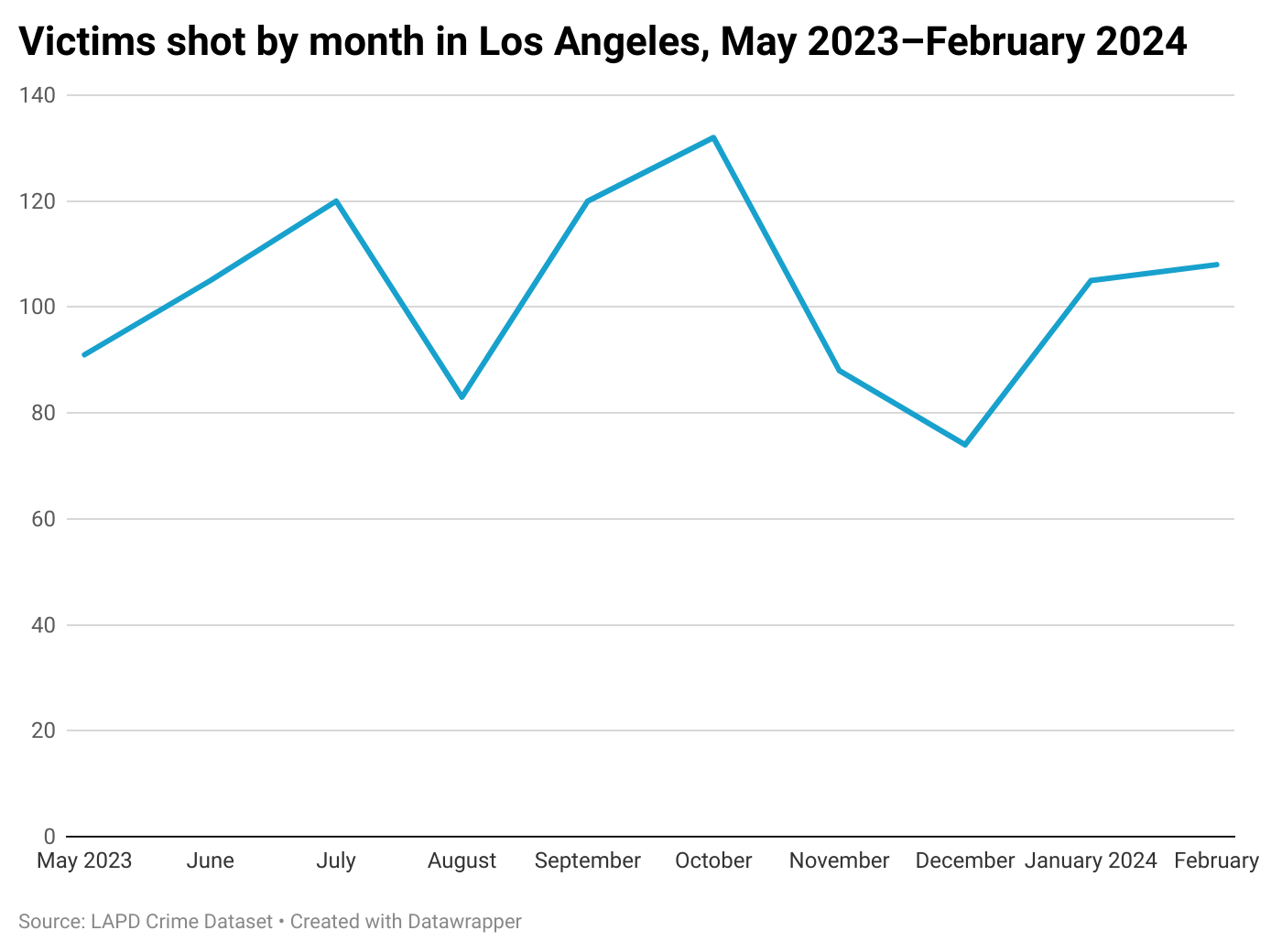Public access to Los Angeles crime data begins to go dark

Until earlier this month, the Los Angeles Police Department provided the public with an invaluable resource: records of every crime report in the city for the past 14 years.
Numbering over 3 million records, it was a tally of every homicide, stolen car, hate crime, assault and act of vandalism. It detailed where it occurred and when, and identified information about the victim and any weapon used. In fact, it was one of the most thorough records of crime available in any major American city.
But beginning on March 7, that reporting began to change. A long overdue transition to a more modern records-management system began (it’s called the National Incident-Based Reporting System, or NIBRS). In short, the LAPD has to meet new crime reporting standards mandated by the FBI. It’s the same for every police department in the country.
In the long run, this will offer a more transparent and complete picture of public safety for the city’s nearly 4 million residents. As Deputy Chief John McMahon, who heads the department’s Information Technology Bureau, told the civilian Police Commission this month, “There is much more data with NIBRS compared with the current summary reporting system, and we will be able to do more robust crime analysis in the future with that data.”
But in the short term, the data available to the public will slow to a trickle and then dry up (the department will continue to provide a version of its weekly Compstat data).
Already this month, the LAPD’s Central Bureau migrated to the new system. Over the next two months, the remaining three bureaus will follow. As they do, the full data will no longer be accessible, though LAPD leaders said they will provide certain crime information and statistics.
How long this dark period will last is unclear. The LAPD’s public information office declined to answer questions on the matter, despite repeated attempts.
Monique Turner, the commanding officer of the applications development and support division, essentially the person in charge of all of the department’s technical infrastructure, said the new data should be available sometime after October 2024.
“LAPD understands the value of transparency in our data for the public,” Turner wrote in an email. “Our ability to keep our communities safe is, in part, dependent on the data collected.”
One of the technical hurdles to overcome is that the new, more advanced system can’t easily connect with the old one. That means it will be difficult to compare new crime data with what came before. And that’s one reason why the new data won’t be immediately available.
For the past five years, Crosstown has used the LAPD data to report on all manner of public safety issues in Los Angeles, from the sharp rise in hate crimes to a decline in burglaries. We’ve used the data to report on issues involving domestic violence and restraining order violations, as well as to help residents understand the sudden spike in catalytic converter thefts.
Access to this data was essential during the pandemic. It allowed Crosstown to report, early on, that murders and gun-related crimes were beginning to rise in the city and also to note when they began to fall last year.
The current shift comes as the numbers of robberies, shots fired and other violent crimes are ticking up. We won’t know the full details about this trend until the new system comes online.

This data is often crucial in an election year, such as this one, as politicians often make public safety the centerpieces of their campaigns. That’s the case in the current race for Los Angeles District Attorney, which pits the reformer and incumbent George Gascon against a tough-on-crime opponent named Nathan Hochman. Without publicly available data, it could become difficult to fact-check candidates’ statements about crime.
As Crosstown has documented, people’s perceptions of crime are often formed from news reports of some of the most headline-grabbing incidents that occur. The data, instead, offers essential context, going back more than a decade, which can put the current situation in perspective.
For example, footage from Ring doorbell cameras and other devices that capture video frequently wind up on social media sites such as Facebook and NextDoor. This sometimes raises an alarm about burglaries. In fact, last year Los Angeles had 2,189 fewer burglaries than it did in 2010, a drop of 10.6%.
Although months from implementation, LAPD brass are already warning that when the new system is complete the crime numbers will appear to increase. That’s because in the old system, if multiple crimes were committed as part of one incident – say assault and vandalism together – only the most serious crime would be reported. The new system will record all of them.
“We’d only report the highest crime,” said McMahon. “If it was a murder, we would report the murder and only the murder. There were no reports or any underlying crimes that might have been reported in association with that murder. So we will be reporting crimes that historically we would not have otherwise reported.”
But checking those figures won’t be possible until the LAPD makes the new data public.
Have questions about our data or about Crosstown? Write to us at askus@xtown.la.






